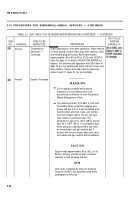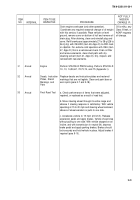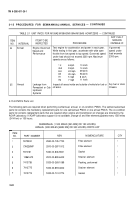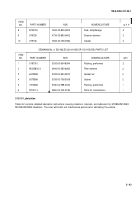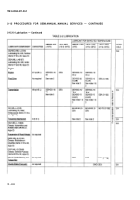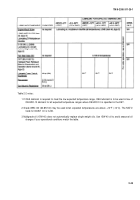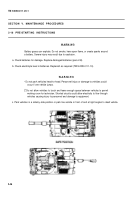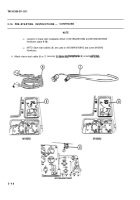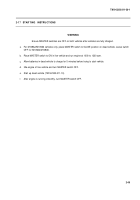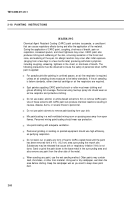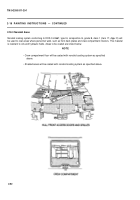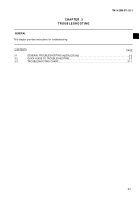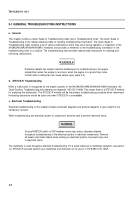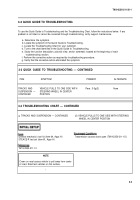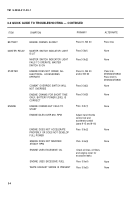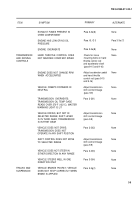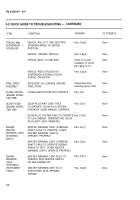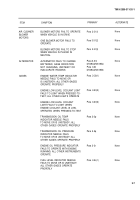TM-9-2350-311-20-1 - Page 98 of 1275
TM 9-2350-311-20-1
2-18 PAINTING INSTRUCTIONS
WARNIN G
Chemical Agent Resistant Coating (CARC) paint contains isocyanate, a constituent
that can cause respiratory effects during and after the application of the material.
During the application of CARC paint, coughing, shortness of breath, pain on
respiration, increased sputum, and chest tightness may occur. CARC paint also
produces itching and reddening of the skin, a burning sensation of the throat and
nose, and watering of the eyes. An allergic reaction may occur after initial exposure
(ranging from a few days to a few months later) producing asthmatic symptoms
including coughing, wheezing, tightness in the chest, or shortness of breath. The
following precautions must be observed to insure the safety of personnel when CARC
paint is applied:
For spray/brush/roller painting in confined spaces, an air line respirator is required,
unless an air sampling shows exposure to be below standards. If the air sampling
is below standards, either chemical cartridge or air line respirators are required.
Spot painters applying CARC paint by brush or roller must wear clothing and
gloves affording full coverage. Personnel using touchup spray kits should wear an
air line respirator and protective clothing.
Do not use water, alcohol, or amine-based solvents to thin or remove CARC paint.
Use of these solvents with CARC paint can produce chemical reactions resulting in
nausea, disease, burns, or severe illness to personnel.
Do not use paint solvents to remove paint/coating from your skin.
Mix paint/coating in a well ventilated mixing room or spraying area away from open
flames. Personnel mixing paint/coating should wear eye protection.
Use paint/coating with adequate ventilation.
Personnel grinding or sanding on painted equipment should use high-efficiency,
air-purifying respirators.
Do not weld, cut, or apply any form of heat to CARC-coated metal until the paint
has been removed from a 4-in. (10.2-cm) area surrounding the rework site.
Substances may be released that cause skin or respiratory irritation if this is not
done. Sand or grind the paint down to the base metal in the surrounding area and
also remove any paint from the other side of the metal.
When sanding any paint, use the wet sanding method. Older paints may contain
lead, chromates, or other toxic material. Using wet or dry sandpaper, wet down the
area before starting. Keep the sandpaper wet as you sand to keep down paint
dust.
2-50
Back to Top

